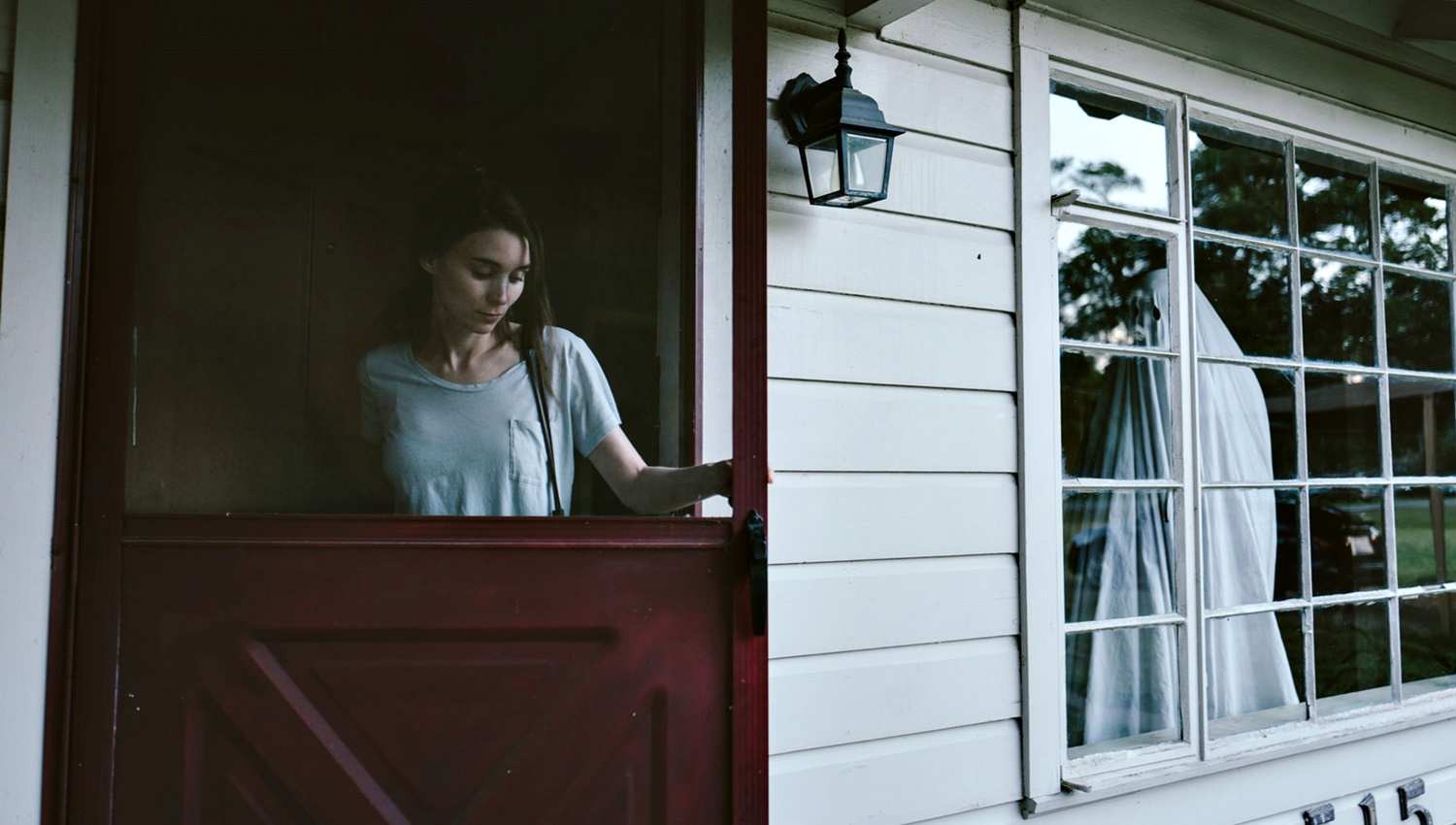
A Ghost Story
Dustin Chase
Texas filmmaker David Lowery’s latest film is an experiment. It’s an artistic endeavor, it’s risky, it requires everything from the viewer and only gives you something in return if you let it. A Ghost Story however doesn’t work as a cinematic feature, at least not in the traditional sense of a customer buying a ticket and expecting something in return. I highly recommend anyone curious enough to experience A Ghost Story, first listen to Kris Tapley’s interview with the filmmaker. That will give insight where this concept of time, nostalgia, loss, yearning and death came from. Lowery’s previous Pete’s Dragon or Ain’t Them Bodies Saints (also Mara/Affleck) doesn’t give viewers any indication to what they will find here. A Ghost Story is not a horror film, it’s not technically a love story (although you could piece together some pretentious explanation for that), it’s not a movie with performances, characters don’t even have names.
A couple arguing about moving from their central Texas farm house, is woken in the middle of the night by strange noises. He (Affleck) a music producer, wants to stay in Texas, while his wife (Mara) wants to move elsewhere. He is killed in a car accident, right in front of the house and she lingers around the property for a few years before selling it and moving on with her life. What remains is a ghost, following her around from room to room, but confined specifically in that home, that property. Before she leaves the house for the last time, she puts a note in the wall. The ghost attempts for years to access the note. The ghost watches time take a toll on the house, even meeting a similar ghost next door who is “waiting” for someone to return.
Doesn’t work as a cinematic feature, at least not in the traditional sense of a customer buying a ticket and expecting something in return.
Lowery presents A Ghost Story in a 1.33 : 1, square box format and is filtered to look like a vintage viewfinder for many scenes. It takes some getting used to, but eventually, miraculously even, you get sucked into the story and forget about all the peripheral elements. One thing you won’t forget is the excruciating scene where Mara eats and digs at a sympathy pie for what feels like an eternity on film. If the scene was meant to express mourning through angry, compulsive eating, we get that, in the first ten seconds, but ten minutes pass by, and stomach’s will be turned. Lowery toys with the audience, how long will they sit through this, he admits it’s an endurance test. Some of the exterior shots with the ghost seen in various places are stunning, Terrence Malick influenced work.
His transitions from one scene to another, especially during the early house sequences are inspired and masterfully subdued. The score by Daniel Hart (Ain’t Them Bodies Saints) is the majority of the sound you hear from the film. Sometimes quiet, others painfully present and emotional, even absent in many scenes are we hear nothing but the scuff of the ghosts’ bedsheet becoming less white. The song featured predominately in the trailer, “I Get Overwhelmed”, by Dark Rooms, isn’t just a catchy beautiful parallel to the imagery, but also used in the film in a powerful way. The two scenes that stood out the most, both feature the ghost from next door (wearing an off-white bedsheet with flowers). The two communicate with subtitles and there is an indescribable sadness about this ghost who can’t remember who he/she is waiting for. A Ghost Story originated out of the longing for physical place where one feels the most happiness. For audiences who still live in the house they were raised in, this experience will be even more diluted or inaccessible. If, however, like most humans, you have moved around, and can recall memories from previous addresses, and if you are open to it, A Ghost Story can have a profound effect.
Final Thought
Works brilliantly in the realm of artistic expression, not as satisfying on a traditional cinematic level.

1 thought on “A Ghost Story”
Pingback: Never Goin' Back – Texas Art & Film